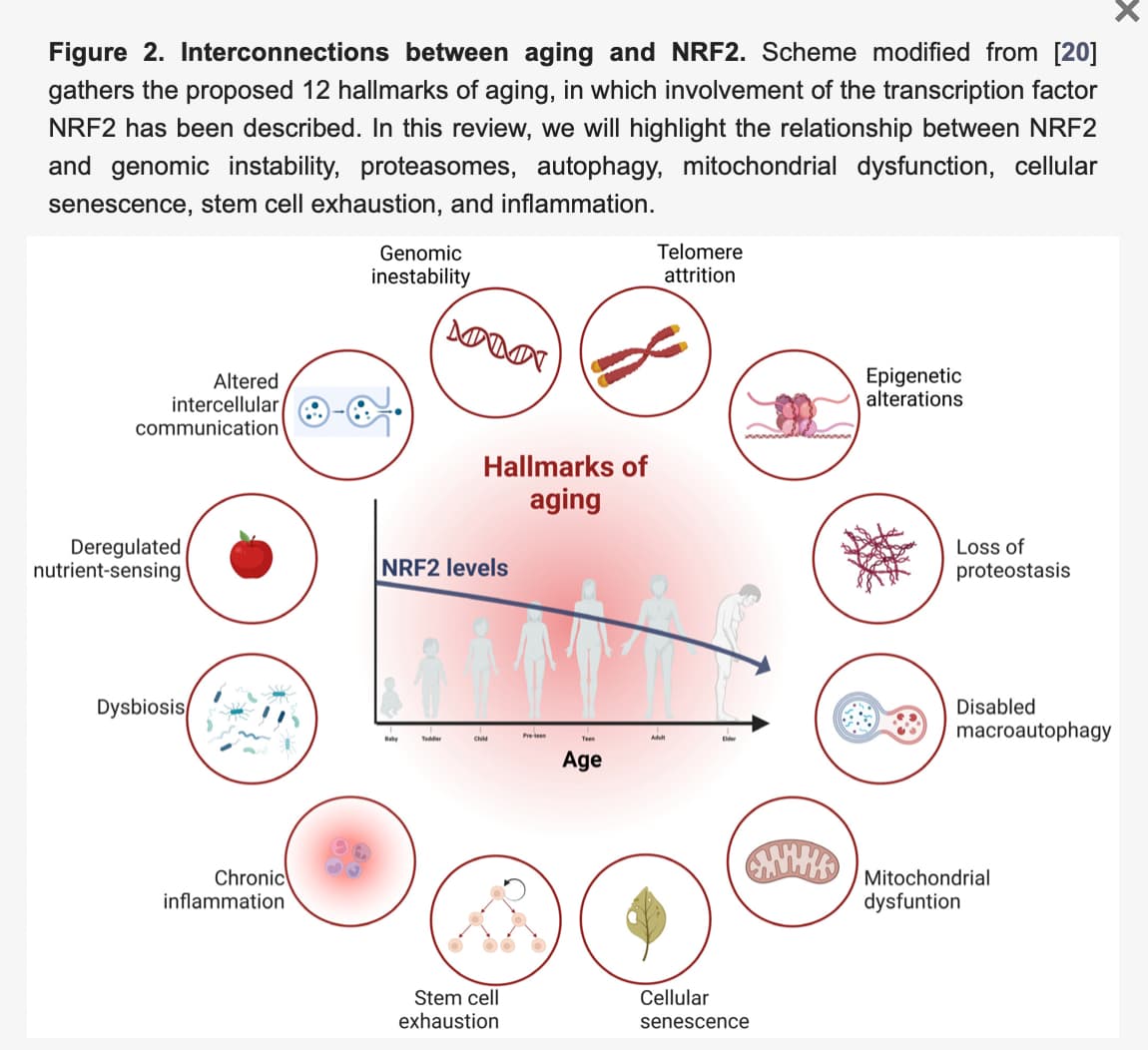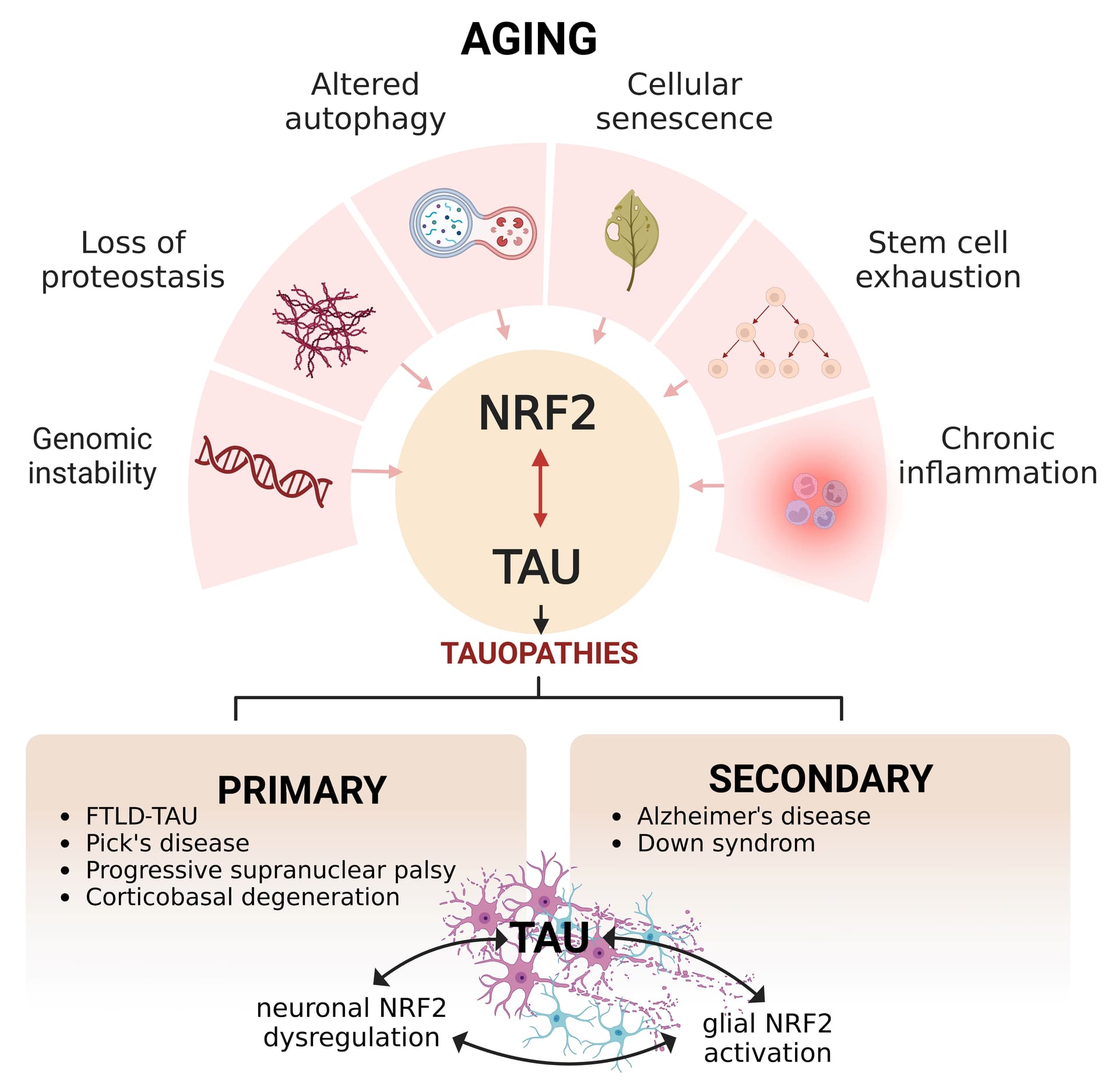Interesting new research addressing the importance area of brain aging. See for more info: The Problem of Brain Aging, Peter Fedichev
Seems like broccoli sprouts , and Sulforaphane, etc. (NRF2 activating) supplements have a reasonable chance of improving on brain aging outcomes and perhaps lifespans… related reading: Sulforaphane and Other Nutrigenomic Nrf2 Activators: Can the Clinician's Expectation Be Matched by the Reality? - PMC
The NIA ITP program had success with Protandim, a supplement mixture with NRF2 activators, which increased lifespan by 7% in male mice: Longer lifespan in male mice treated with a weakly estrogenic agonist, an antioxidant, an α‐glucosidase inhibitor or a Nrf2‐inducer - PMC
Role of the Transcription Factor NRF2 in Neurodegenerative Disorders
The aging of the population poses a growing burden in society. This is associated with the increase in disability and diseases that have a high impact on health care, on patients and their families. Likewise, aging is associated with the appearance of neurodegenerative diseases. Although each of these diseases has its own characteristics, they all share altered proteostasis, oxidative stress and neuroinflammation. In recent years, it has been described that the transcription factor NRF2 is involved in the modulation of all these processes, becoming a pleiotropic factor. Therefore, understanding the involvement of NRF2 in the different mechanisms associated with neurodegeneration may be of vital importance in establishing new therapeutic targets.
Paper:
Aging, NRF2, and TAU: A Perfect Match for Neurodegeneration?
Although the trigger for the neurodegenerative disease process is unknown, the relevance of aging stands out as a major risk for the development of neurodegeneration. In this review, we highlighted the relationship between the different cellular mechanisms that occur as a consequence of aging and transcription factor nuclear factor erythroid-2-related factor 2 (NRF2) and the connection with the TAU protein. We focused on the relevance of NRF2 in the main processes involved in neurodegeneration and associated with aging, such as genomic instability, protein degradation systems (proteasomes/autophagy), cellular senescence, and stem cell exhaustion, as well as inflammation. We also analyzed the effect of aging on TAU protein levels and its aggregation and spread process. Finally, we investigated the interconnection between NRF2 and TAU and the relevance of alterations in the NRF2 signaling pathway in both primary and secondary tauopathies. All these points highlight NRF2 as a possible therapeutic target for tauopathies.
Full Paper (open access)

